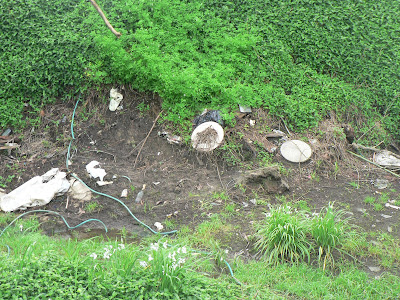Taking Action!
By the Elm Park Yr 6 Enrichment Group 2010
This article has also been published and can be found on
http://www.manukau.govt.nz/EN/Yourcommunity/ParksWalksBeaches/ConservationEducation/Pages/SchoolEducationProgramme.aspx
Next to our school we have a park, and a stream. In our Y6 enrichment group we thought we’d look after the stream and while doing so the park became our responsibility too. We heard about the Adopt a Park program and decided to go for it! We needed ACTION if we wanted our school and the Elm Park reserve to be a healthy, sustainable environment. Kids thinking for the future!!! We became involved in many different ways…
How we use the Elm Park Reserve
We use our park for several things such as Push Play Day. The whole school does fun activities on this fun-filled day. We also do soccer training for the soccer team on this field as our field is always filled with people playing games. On athletics day we do high jump, sprints and many other activities. These are just a few of the reasons why we want to take care of this field.
Why our park is special to us
The public play some sports play games there on Saturday where there’s plenty of space to run around. Our park also has a very inspiring landscape. And after school, kids like to roll down the grassy hill just to have fun.
Our school can take advantage of our park in many ways. In warm summer days, some of the seniors use our park to hold sports events. Younger students even use our park for cross-country. Without our park, our school wouldn’t be able to do a lot of things.
Our Involvement with the Park:
In Year 2 some people in our group went down to the bank of the stream to plant harakeke/flax. We planted the flax in 2006. We planted about 100 plants down on the bank of the stream. The children were helped by adults to plant the flax. The flax started out very small but now they are gigantic.
 |
| Harakeke (Flax) |
We also took some measurements in year 4. We went down with some things to measure what the temperature in the water and we collected some macroinvetebrates. We collected some but most were macroinvertebrates that live in polluted or mediocre water. None of them were part of the group of macroinverterbrates that only live in pristine water. So we know that our stream's water can be improved.
 |
| Identifying invertebrates |
|
|
|
 |
| Colour coded chart tells us which macroinvertebrates are present in our stream and the water quality |
The Year 6 enrichment group have been collecting and observing information from the Elm Park stream. We have been trying to monitor the health of our stream. The data we have been collecting includes the clarity, pH, the temperature and any visible pollution.
 |
| Observations on the bridge |
 |
| Collecting data |
We also took some measurements in year 4. We went down with some things to measure what the temperature in the water and we collected some macroinvetebrates. We collected some but most were macroinvertebrates that live in polluted water. None of them were part of the best macroinvertebrates.
This data is posted on the WaiCare website for the scientists. We have investigated the stream’s health by looking for macroinvertebrates that indicate clean water.
It seems that our plantings have made a difference to our stream. In the past two years our steam seemed polluted and dirty but now we have made such a difference that there is only a little pollution and we can see the bottom of the steam. However, our stream has shrunk over the years. We heard that one family used to kayak easily down the length of the stream. Another sad thing is that storm water runs into the stream. Some other disappointments are that while we were trying to save our stream others were polluting it - there was rubbish, paint cans, an old porcelain toilet and a lot of other litter everywhere. We have started on the small litter but we are going to clean it up further in Clean Up NZ Week. Something else that shocked us was that there was a tree that fell towards the stream during a storm. It could have blocked the stream. The good part is that now we have more space to plant native trees.
 |
| Rubbish from houses |
Adopt a Park
This term we have been working harder now we have chosen to be part of the Adopt a Park programme. We have been helping to plant trees with MCC park rangers and collecting litter that drifts to the park from our school. We were quite shocked by the litter that gets blown to the stream. We showed the litter at the school assembly.
 |
| Tree planting with help from some keen Yr 4 kids | | | |
|
 |
| Learning how to plant a tree correctly |
We will keep our project going. Conservation Week is coming and Clean Up NZ Week. We will continue taking action!



























































